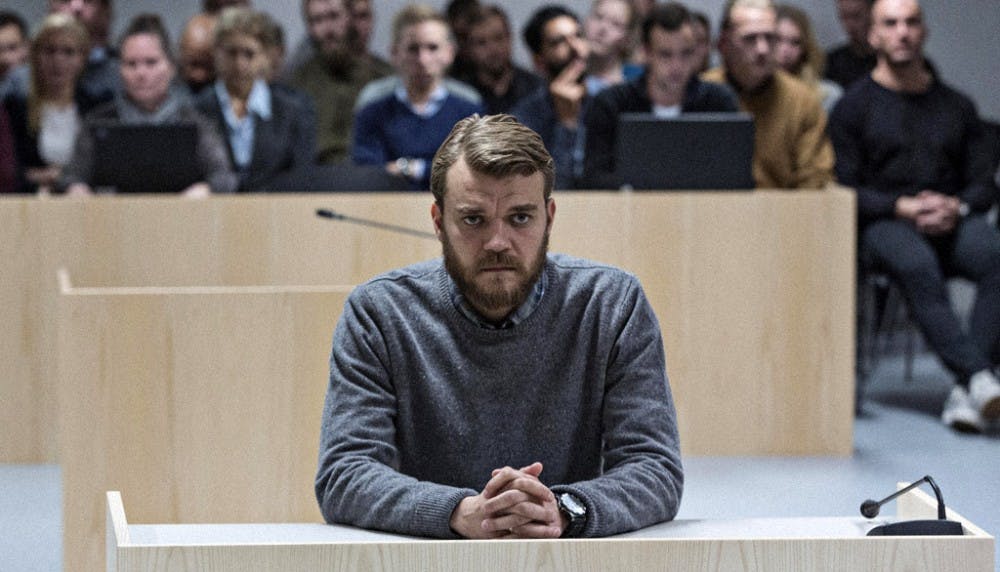As the Academy Awards approach, everyone's paying attention to A War, one of the Best Picture nominees and the official submission from Denmark. Tobias Lindholm, took my phone call to discuss his third feature film. The two—hour drama charts the protagonist, Claus Pedersen, through his stationing in Afghanistan and subsequent return to Denmark when he is tried for misconduct during the war. Woven through the film are scenes of his wife and children at home, as his wife grows tired and anxious sleeping in bed alone and their children grow difficult and petulant.
“It was important to not only show the explosion but the result of the explosion. And that result echoes all the way back to Denmark in this story,” explains director Tobias Lindholm, as he describes the way humanity is often veiled in combat films.
This foreign focus on a war that America was engaged in helps to bring new meaning to our own occupation and its effects at home. There’s an American tendency to shroud the secondary repercussions of war in heroism and depicted brutality, which is an approach that characterizes movies like Saving Private Ryan and American Sniper. Without engaging the emotional and political messaging of these two films, both remarkably fail to explore the costs of war on the home front (save for the tiny prologue and epilogue in Saving Private Ryan). And as it seems, this focus on the formal action and processes of war has become the present standard.
Expanding on the way that this emphasis affects how films are shot, Lindholm explains, “In some war films, the camera can see it all and never gets shot. By placing the camera out there in the crossfire, and not being scared of it, we admit to the audience that this is not dangerous and it’s all fake.” This type of shooting films the explosions and firefights from several different points of view, never establishing a perspective for the audience. This centers attention on the violence and brutality playing out onscreen, which is an effect different from what Lindholm hoped to achieve with the camerawork in A War. “Putting the cinematographer just behind the soldiers and forcing him to duck when the bullets start flying helps the audience to realize that this is a dangerous place to be. I want to give the audience an emotional connection to what it has been like serving down there [in Afghanistan] instead of being fascinated by the cinematography of war.”

In focusing his movie on the civilian consequences of war, Lindholm also strove to make it apolitical. “I felt that we needed to show in a human way, not a political way, the echoes of war. It’s not just in Afghanistan, it’s back in our home countries,” he notes. “I’m not a soldier. I’m a proud father of three kids and have a great wife and when I leave to do films I miss them. Even though my life is not in danger I feel the negative results of me not being there. Multiply that times 500 and it might feel like what it is to have your spouse go to war.”
The aim was not to necessarily moralize Denmark’s stationing in Afghanistan, but rather to open a Danish dialogue on the wounds that this political decision may have opened. “I’m a Dane and with the films I do I always aim for a Danish mark. For me it was important to show the Danish people and the consequences of the political decision of sending soldiers to war.” As the first war that the country has fought since World War II, this war has important generational significance for the people of his country. “I wanted to place the main character in the role that Denmark is in right now and we are caught in our own backyard and we need to sit down and figure out what we’ve been part of.”
Drawing inspiration from films like Restrepo, The Hurt Locker, The Deer Hunter and Paths of Glory, Lindholm wanted to make an intentionally morally ambiguous picture for maximum audience introspection. “I wanted the audience to feel torn, to feel separated. We have democracy and what can we allow and what can we accept, and you have to take your punishment. Hopefully that has reminded the average news viewer on his couch that it’s really easy to be judgmental and to think twice before you know what to do in certain situation.”
As students who were growing up during the American occupation of Afghanistan, and who have spent our later years flooded with its criticisms, it's refreshing to see such an emotive portrait of a country just as invested in the struggle as the United States is.







